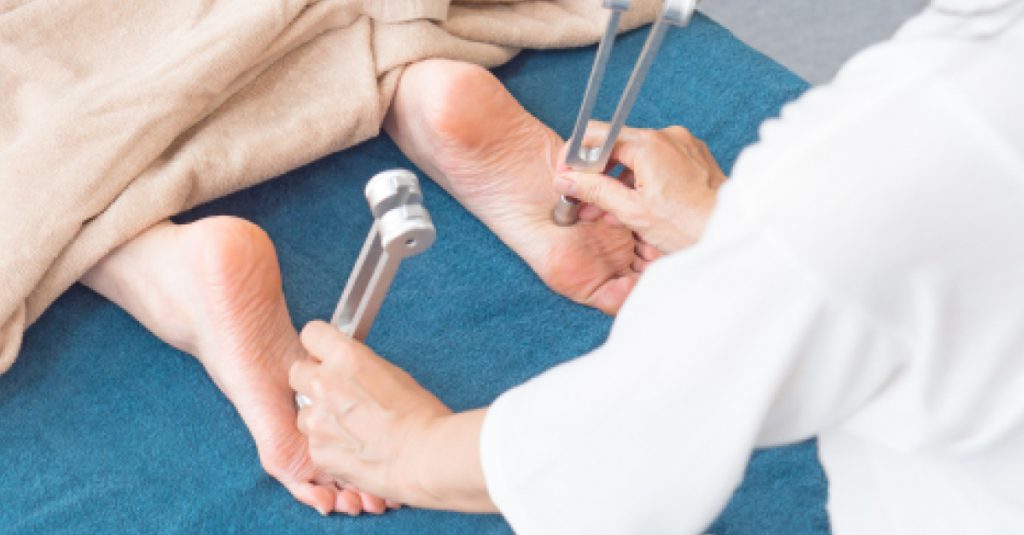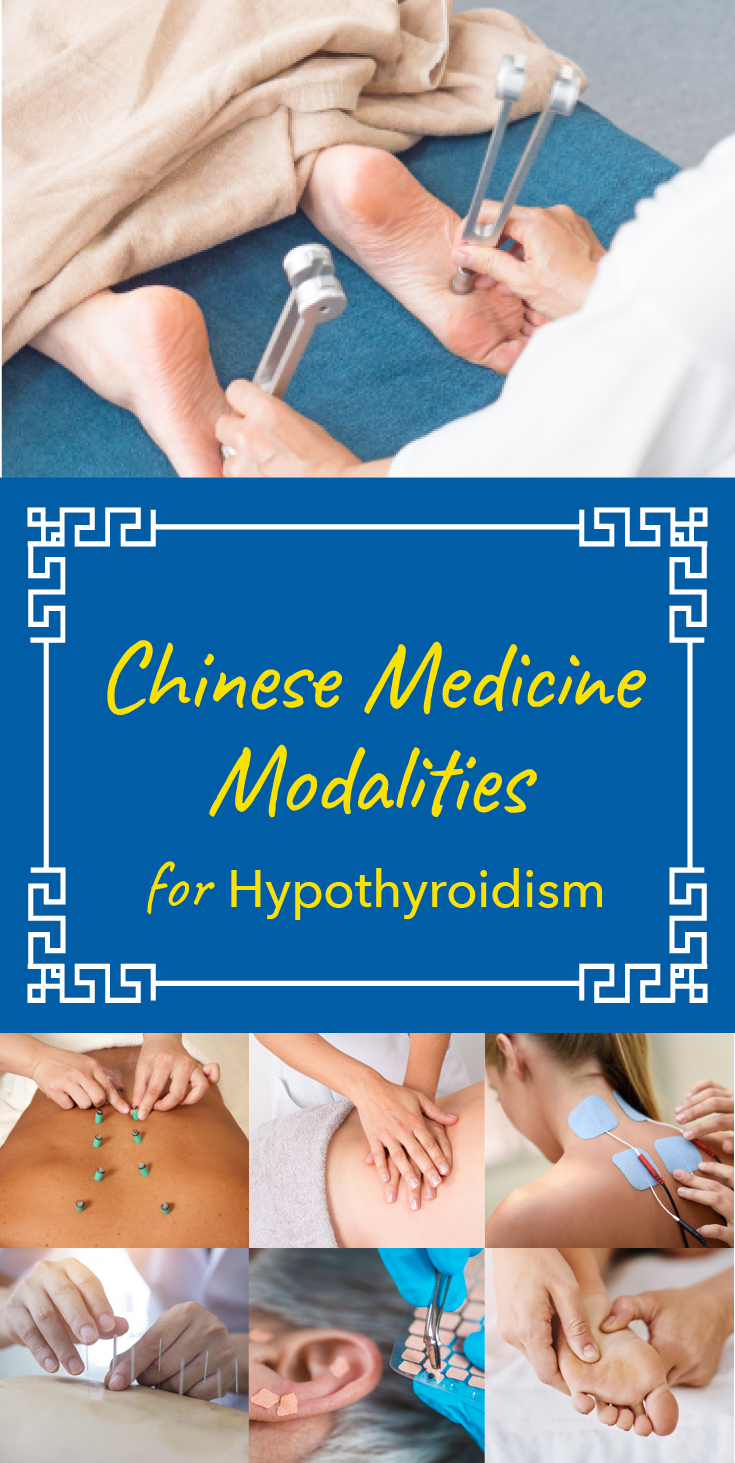Expert Advice

Acella Pharmaceuticals, LLC, is partnering with Ericca Burke, a board-certified licensed acupuncturist, to bring greater awareness to the importance of thyroid care and education. This post was sponsored by Acella Pharmaceuticals and should not be construed as medical advice. Please talk to your doctor about your individual medical situation.
Disclaimer: The information provided is for educational purposes only and does not substitute professional medical advice. Consult a medical professional or healthcare provider before beginning any exercise, fitness, diet, or nutrition routine.
In this post we’ll explore various Chinese medicine modalities that may help patients with hypothyroidism. We’ll provide an overview of the following treatments:
- Acupuncture needles
- Electrical stimulation
- Acupressure
- Tuning forks
- Moxibustion
- Tui na
- Ear seeds
Acupuncture Needles
The practice of acupuncture involves a practitioner gently insertingsterile, single-use thin needles into the skin. The needles stimulate points in the body where “qi,” or energy, gathers and help direct and balance energy flow. People are often surprised to learn that acupuncture needles are so thin that up to 40 acupuncture needles can fit inside one standard hypodermic needle. When treating a patient with hypothyroidism, the acupuncturist first determines the root cause of the hypothyroidism from a Chinese medicine perspective. The diagnosis guides the selection of points where acupuncture needles should be inserted to help restore energetic balance in the body.
Electrical Stimulation
Electrical stimulation, or “e-stim,” is also called electro-acupuncture. This modality uses a device that connects electrodes to acupuncture needles. The device sends an electrical current between acupuncture points which can be very tonifying. Electrical stimulation can be helpful in deficient conditions such as hypothyroidism. It is also commonly used with injuries to reduce inflammation and stimulate healing.
Acupressure
Acupressure is the application of gentle pressure to acupuncture points using the fingers. Points are massaged with a downward pressure in small circular motion for up to one minute at a time. This is a great option for people who are afraid of needles. It is a primary treatment option in telemedicine or when patients are not able to visit the office. Acupressure can also be done at home in between in-office acupuncture treatments.
Tuning Forks
Tuning forks can be used in a Chinese medicine treatment when they are activated and placed at acupuncture points to stimulate the points. The sound waves of the tuning forks travel deeply into the body along the energy channels. Tuning forks are an interesting option for children as well as people who are too sensitive for acupuncture needles. The vibration of the tuning forks connects with and supports the body’s natural frequencies to balance the body.
Moxibustion
Moxibustion refers to the process of burning “moxa” close to the skin. Moxa is a term used for the dried herb Artemesia vulgaris, or mugwort. The herb is typically pressed and wrapped into cylinders. The moxa roll is lit and blown until only a gentle smoke remains. Burning moxa close to the surface of the skin stimulates acupuncture points. Moxa is particularly helpful in deficient conditions such as hypothyroidism. It may be applied to areas such as the lower back or the insides of the ankles to help strengthen the body’s energy.
Tui Na
Tui na is a form of therapeutic massage that employs rhythmic compression techniques along the body’s energy channels to bring the flow of energy back into balance. Tui means to “push” and na means “grasp” in Chinese. Tui na helps harmonize the flow of qi (energy) and blood. Patients with hypothyroidism may receive tui na in areas such as the lower back and along the energy channels associated with the kidneys.
Ear Seeds
Ear seeds are small seeds that are held to acupuncture points on the ear with adhesive tape. The process of activating acupuncture points on the ear is called auriculotherapy. The external ear contains a microsystem of the human body, and a variety of points can be found on the ear to support the thyroid and help treat hypothyroidism. Ear seeds can be used as a standalone treatment, and they are also a great addition to an acupuncture treatment. Ear seeds may be worn up to five days at a time.
Additional modalities
Additional modalities used in Chinese medicine treatments include cupping and gua sha. Cupping is a form of deep-tissue massage where an oil is applied to the skin and cups are attached to the body by a vacuum seal that is created by heat or a pump. Gua sha is also a massage technique that is more of a stroking technique where the skin is press-stroked using a smooth-edged massage tool. The word “gua” in Chinese refers to the stroking or scraping motion and “sha” refers to the resulting redness. Both of these techniques are typically used to treat excess-type conditions. Since hypothyroidism is considered to be more of a deficient condition, cupping and gua sha would not typically be used to treat hypothyroidism.

ML-0336
Note that DTE products, including NP Thyroid®, have not been reviewed by the FDA for safety or efficacy.
IMPORTANT RISK INFORMATION, INCLUDING BOXED WARNING & INDICATIONS
Important Risk Information
Drugs with thyroid hormone activity, alone or together with other therapeutic agents, have been used for the treatment of obesity. In euthyroid patients, doses within the range of daily hormonal requirements are ineffective for weight reduction. Larger doses may produce serious or even life-threatening manifestations of toxicity, particularly when given in association with sympathomimetic amines such as those used for their anorectic effects.
- NP Thyroid® is contraindicated in patients with uncorrected adrenal insufficiency, untreated thyrotoxicosis, and hypersensitivity to any component of the product.
- In the elderly and in patients with cardiovascular disease, NP Thyroid® should be used with greater caution than younger patients or those without cardiovascular disease.
- Use of NP Thyroid® in patients with diabetes mellitus or adrenal cortical insufficiency may worsen the intensity of their symptoms.
- The therapy of myxedema coma requires simultaneous administration of glucocorticoids.
- Concomitant use of NP Thyroid® with oral anticoagulants alters the sensitivity of oral anticoagulants. Prothrombin time should be closely monitored in thyroid-treated patients on oral anticoagulants.
- In infants, excessive doses of NP Thyroid® may produce craniosynostosis.
- Partial loss of hair may be experienced by children in the first few months of therapy but is usually transient.
- Adverse reactions associated with NP Thyroid® therapy are primarily those of hyperthyroidism due to therapeutic overdosage.
- Many drugs and some laboratory tests may alter the therapeutic response to NP Thyroid ®. In addition, thyroid hormones and thyroid status have varied effects on the pharmacokinetics and actions of other drugs. Administer at least 4 hours before or after drugs that are known to interfere with absorption. Evaluate the need for dose adjustments when regularly administering within one hour of certain foods that may affect absorption.
- NP Thyroid® should not be discontinued during pregnancy, and hypothyroidism diagnosed during pregnancy should be promptly treated.
Indications
NP Thyroid® (thyroid tablets, USP) is a prescription medicine that is used to treat a condition called hypothyroidism from any cause, except for cases of temporary hypothyroidism, which is usually associated with an inflammation of the thyroid (thyroiditis). It is meant to replace or supplement a hormone that is usually made by your thyroid gland.
NP Thyroid® is also used in the treatment and prevention of normal functioning thyroid goiters, such as thyroid nodules, Hashimoto’s thyroiditis, multinodular goiter, and in the management of thyroid cancer.
Revised
10/2023
You Are About To Leave This Website
By clicking continue, this link will take you to a website to which Alora Pharmaceuticals’ Policies & Terms of Use do not apply.
^Based on prescriptions filled, NP Thyroid® is the #1 Prescribed DTE in the United States. Source: IQVIA National Prescription Audit (NPA) data on file. Acella Pharmaceuticals, LLC.
